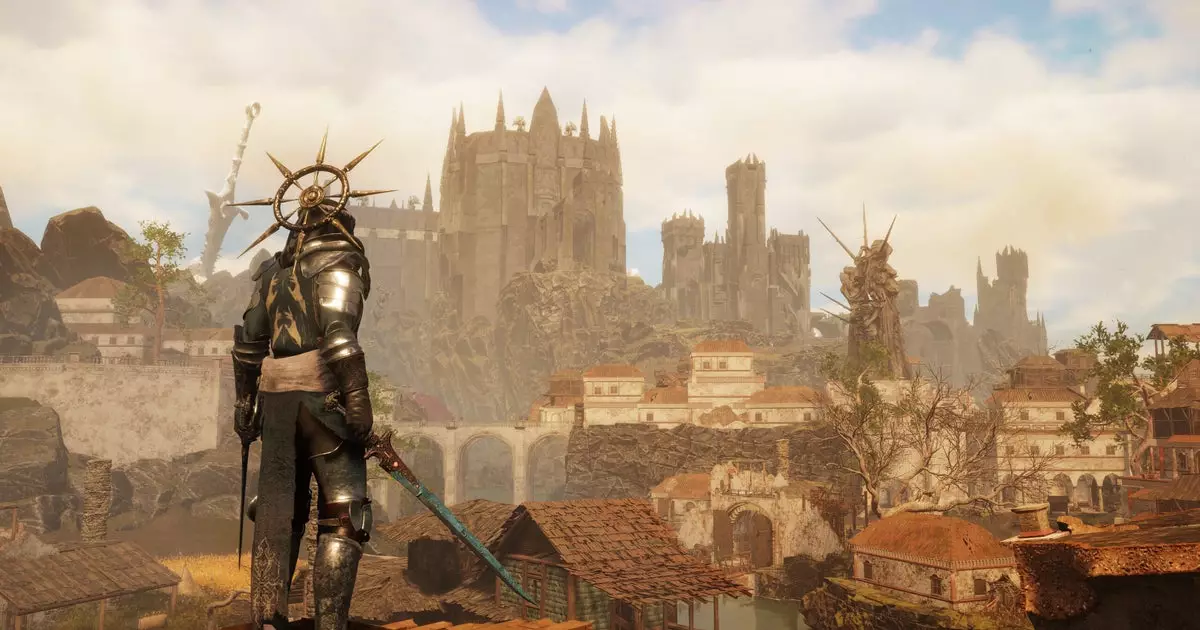In the realm of open-world role-playing games (RPGs), titles like Skyrim and the recent remaster of Oblivion have captivated audiences for years. However, with the increasing concerns about corporate control and enticing alternatives in the gaming universe, many players are seeking avenues away from Microsoft’s dominion. Enter *Tainted Grail: The Fall of Avalon*, a game that has caught significant attention for its promise of an immersive experience steeped in reimagined Arthurian myth. While a review may still be forthcoming, the impressions so far suggest that it could resonate with players looking for depth and originality.
From the outset, *The Fall of Avalon* showcases its engagement with the gaming community through an “Overwhelmingly Positive” consensus on Steam, accompanied by engaging trailers offering glimpses into its gameplay mechanics, such as spellcrafting, immersive environments, and even fishing. This signals not merely a rapid path to development but also a genuine effort to build a universe that players can feel connected to. This willingness to engage with players is refreshing and perhaps a much-needed remedy to the often sterile interactions fostered by bigger corporations within the gaming industry.
The Setting and Narrative Tapestry
Set in a hauntingly dark world, *The Fall of Avalon* is positioned approximately 600 years after the legendary downfall of King Arthur, in a land plagued by chaos, decay, and “unending strife.” The game ambitiously spans several zones, promising players a sprawling narrative filled with over 200 side quests and a generous playtime of 50-70 hours. This is not merely a collection of quests, but an intricate tapestry, allowing players to embark on various journeys—be it home decoration, farming, or “sketchbook journaling”, a curious feature hinting at a potential fusion of artistry with gameplay mechanics.
What stands out, however, is the central concept of “Wyrdness”—a primordial force that wreaks havoc upon the land during nighttime. This intriguing plot device adds an engaging layer of strategy, as players must contend with increasingly formidable enemies in the dark. While there is a comedic parallel to nighttime struggles alluded to in the article, the Wyrdness serves a functional purpose beyond mere annoyance—it throws players into a relentless cycle of adaptation and survival that is crucial for engagement.
Character Customization and Gameplay Mechanics
At the heart of an RPG lies its character development, and *The Fall of Avalon* appears to pull no punches. Players can choose from an array of playstyles, whether they wish to embody a chaotic alchemist-berserker or a stealthy archer lurking in the shadows. This kaleidoscopic approach to character builds promises to satisfy a diverse array of players, from those who revel in brute strength to those who prefer subtle tactics. Yet, against this enticing backdrop lies a looming sense of skepticism regarding the game’s claim of offering “limitless playstyles” and “meaningful choices.” Such terms have become tired jargon in the industry, often failing to deliver the rich experience they imply.
Despite the cautious skepticism surrounding these promises, the promise of a “mature, morally grey story” can spark intrigue or doubt depending on who you ask. In many respects, these narratives can fall flat, leaving players yearning for authenticity and emotional connection. Developers must tread carefully, ensuring that the depth of storytelling does not devolve into mere tropes or cliché arcs, but rather, enriches the player’s journey through its world.
Aesthetic Flourishes and Thematic Depth
On a more positive note, the artistic direction of *The Fall of Avalon* is a highlight worth celebrating. The game adopts an overarching theme of “everlasting autumn,” contrasted with a sense of rot that permeates its environments. This juxtaposition not only enhances the narrative but also immerses players into a world richly alive in detail and atmosphere. The Red Death plague further amplifies the game’s tone, introducing a sense of dread alongside the priests’ twisted endeavors to find a cure through torturous means.
Such elements invite players to explore the deeper implications of their choices, instilling a sense of weight and urgency in every action taken within the game’s decay-laden world. Unlike many titles that shy away from invoking darker themes, *The Fall of Avalon* is unabashedly bold, inviting players to embrace the murky depths of its storytelling.
*Tainted Grail: The Fall of Avalon* may well prove itself a fascinating entry into the open-world RPG genre. While the shadows of corporate influence loom large, it carries the potential for depth and immersion, fulfilling the longing for a more thoughtful exploration of Arthurian legend and human conflict. With its unique setting, compelling gameplay mechanics, and rich aesthetic, it undeniably offers a promising respite from the standard fare often churned out in the gaming industry. Players eager for narrative and emotional engagement may very well find themselves at home in Avalon’s embrace.

